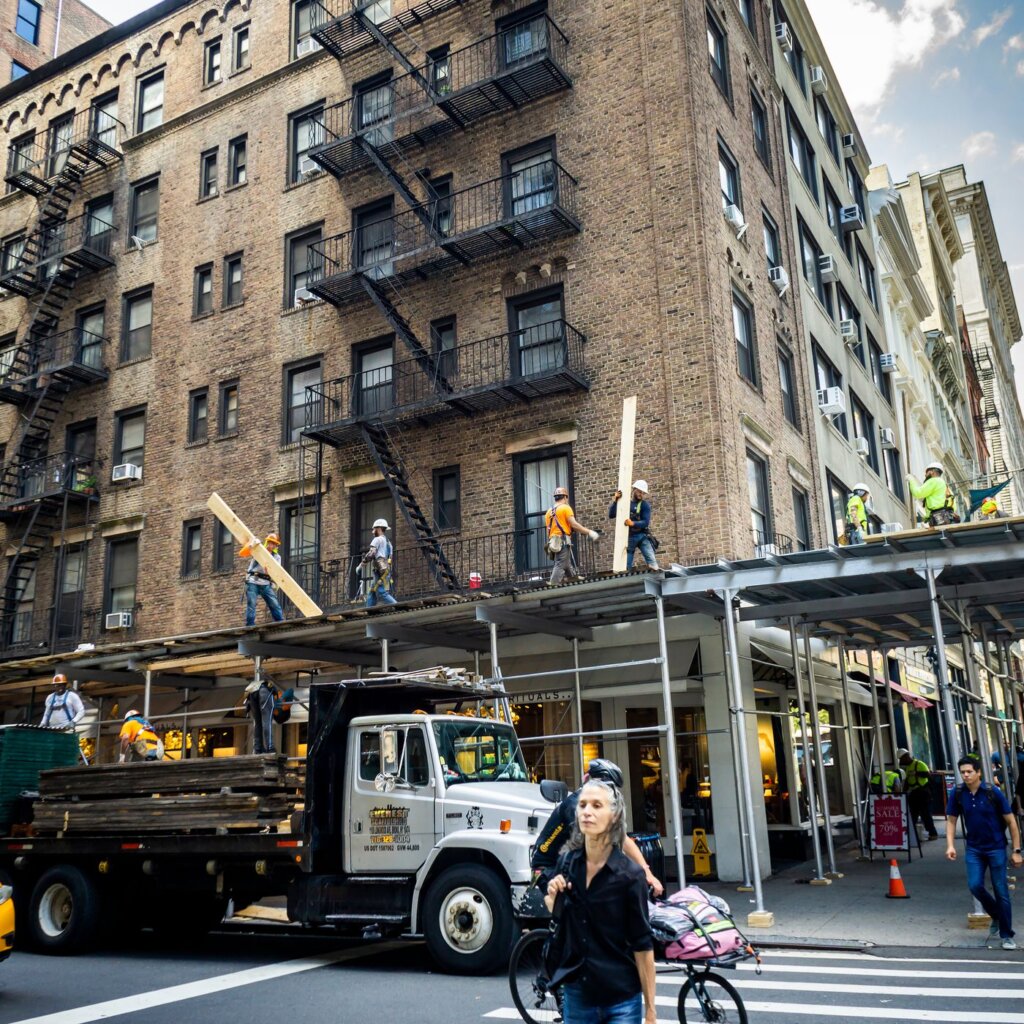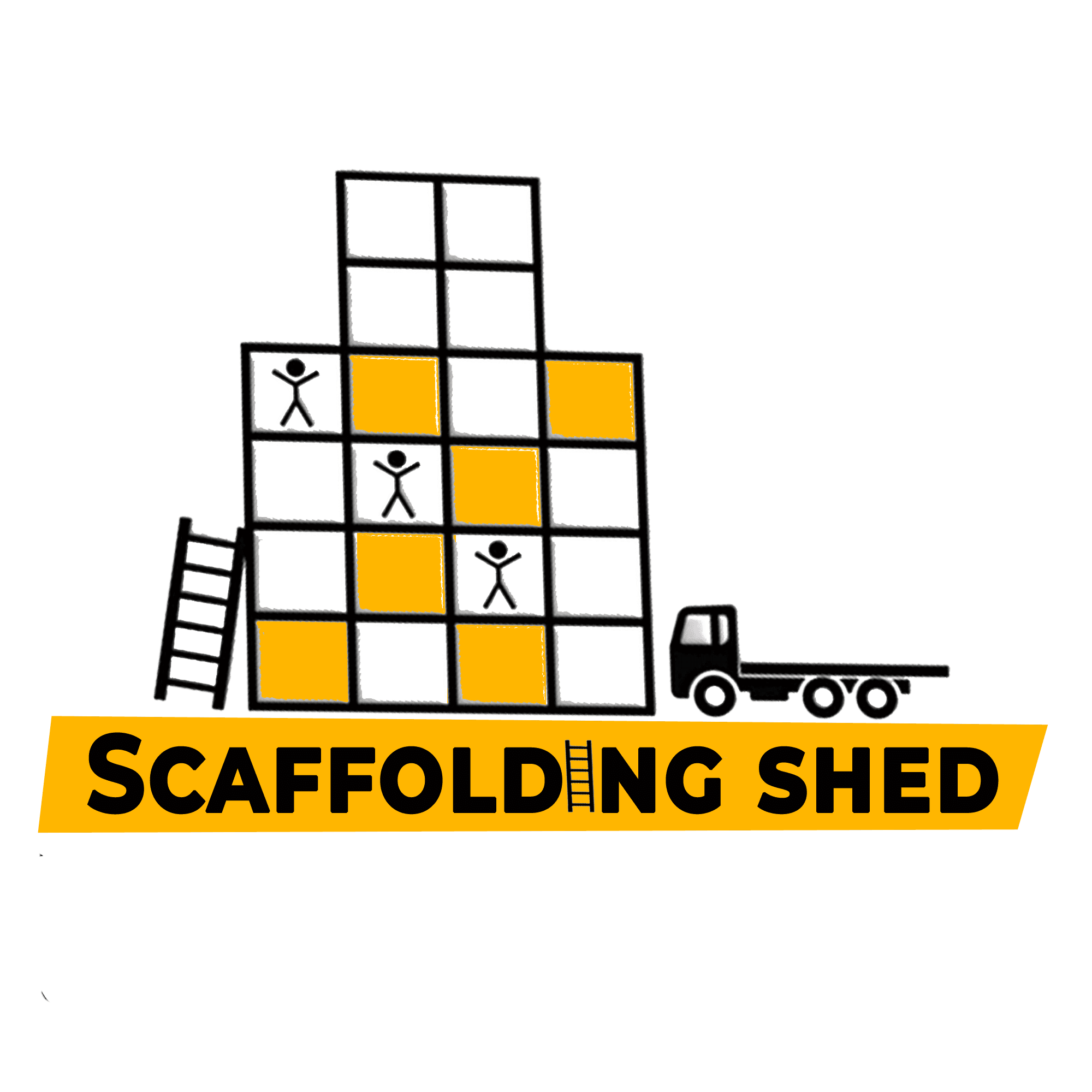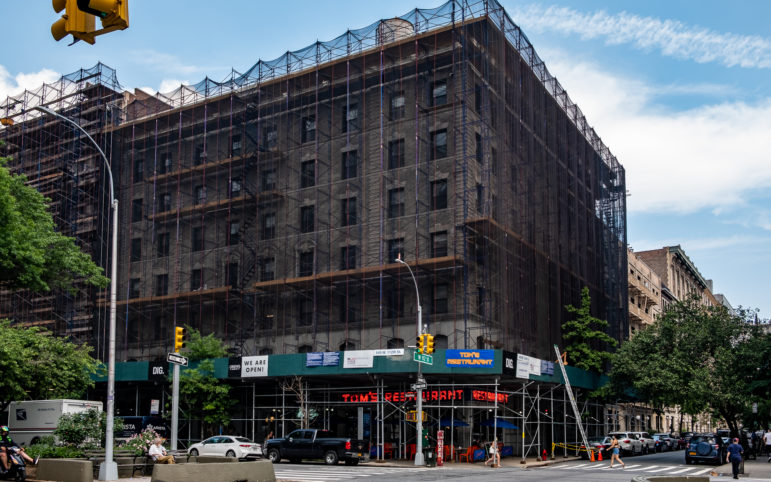Sidewalk Scaffold is an indispensable element of construction and renovation projects, providing access to workers as they construct, repair or maintain structures. Unfortunately, traditional scaffolding often presents challenges to pedestrians by blocking sidewalks and creating safety hazards. More recently, however, innovative approaches to scaffolds installation have come forward that aim to increase both functionality and aesthetics while simultaneously protecting pedestrian safety. This article delves deeper into this concept of Sidewalk Scaffold solutions which are revolutionizing urban environments worldwide.
Traditional Scaffolding:
Traditional Sidewalk Scaffold typically consists of metal poles, wooden planks and mesh netting assembled to form temporary structures around buildings or construction sites. While effective for its intended purpose, traditional scaffolding may be bulky, unsightly, and disruptive to pedestrian traffic – not to mention failing to adequately address safety concerns such as falling debris or blocked sightlines.
As architects, engineers, and designers recognize the limitations of traditional scaffolding systems, they have sought to reinvent it as more than just a functional necessity. Their goal is to integrate scaffolding seamlessly into urban environments while increasing its visual appeal while decreasing its negative impacts on pedestrians and infrastructure nearby.
Innovative Solutions for Sidewalk-Friendly Scaffolding:
Modular and Lightweight Materials:
Modern sidewalk scaffold designs frequently employ lightweight yet modular materials like aluminum or composite plastics that offer strength while reducing the the overall weight of scaffolding structures. As a result, assembly and disassembly operations are performed more quickly, minimizing disruptions to pedestrian traffic and providing quicker installation/removal times.
Sidewalk Scaffold Transparent Panels and Mesh Screens:
One of the main challenges associated with traditional scaffolding is its tendency to restrict visibility and natural light, creating an oppressive tunnel effect on sidewalks. Transparent panels constructed from polycarbonate or tempered glass allow light through while protecting from falling debris. Mesh screens with small openings may also be installed to maintain an airy feeling while keeping objects off of sidewalks.
Artistic and Customizable Designs:
Scaffolding has evolved beyond being used only for utilitarian structures to being an arena for artistic expression and creativity. Artists and designers are joining construction companies in designing custom scaffold installations that serve not only functional needs but also enhance urban environments’ aesthetic appeal through murals, sculptures or interactive elements that attract pedestrians while contributing to cultural vibrancy of communities.

Greenery and Vertical Gardens:
Greenery has the power to soften the hard lines of sidewalk scaffold structures while adding a splash of nature into urban environments. Vertical gardens (or “green walls”) can be integrated into scaffolding systems as a visual barrier between pedestrians and construction activities, creating an enjoyable pedestrian experience. Plants not only beautify scaffolding structures but also contribute towards improved air quality and reduced noise pollution for an enhanced pedestrian experience.
Digital Signage and Information Displays:
Integrating digital signage and information displays into scaffolding systems can improve communication with pedestrians by providing real-time updates on construction progress, safety instructions, alternative pedestrian routes and construction progress. Interactive touchscreens or QR codes may engage passersby while offering educational content about the construction project or local landmarks/history information.
Case Studies and Success Stories:
Cities around the world have embraced sidewalk scaffold with innovative solutions designed to increase pedestrian safety and urban aesthetics. New York City boasts “Urban Umbrella”, featuring sleek canopies designed to protect from elements while still allowing natural light through. Meanwhile in London’s “StreetGarden” project transforms scaffolding structures into vertical gardens to create green oasis in an otherwise concrete jungle.
Conclusion:
Sidewalk scaffold marks an exciting development in the construction industry, where functionality and aesthetics no longer contradict each other. By adopting innovative designs and materials, sidewalk-friendly scaffolding can enhance urban environments while prioritizing pedestrian safety and comfort. As cities continue to develop and thrive, sidewalk-friendly scaffolding will play an integral part in creating more livable and vibrant urban environments for generations to come.
Enhance safety and aesthetics on your construction site with Scaffold Shed! Contact us today to discover our innovative solutions. Protect your workers and pedestrians without compromising on style. Invest in Scaffold Sheds now!

